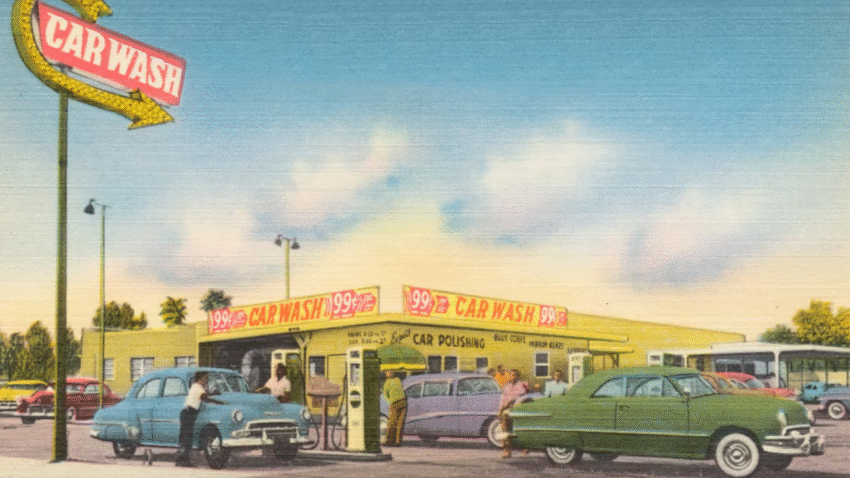Introduction
Is your garage door announcing your arrival to the whole neighborhood every time you open it? A squeaky garage door isn’t just annoying—it can also be a sign that parts are wearing down and need maintenance. Learning how to lubricate a squeaky garage door will help you reduce noise, extend the lifespan of moving parts, and keep your door running smoothly. The process is quick, simple, and can be done with just a few tools.
Why Lubricating a Garage Door Matters
Your garage door is one of the largest moving parts in your home, and it’s exposed to daily wear and tear. Proper lubrication:
- Reduces friction: Keeps rollers, hinges, and tracks operating smoothly.
- Extends component life: Prevents premature wear and rust.
- Minimizes noise: Stops the squeaks and grinding sounds.
- Improves performance: Helps your door open and close with less effort.
Whether your door is manual or automatic, regular lubrication is a key part of garage door maintenance.
Step-by-Step Guide to Lubricating a Squeaky Garage Door
1. Gather Your Supplies
Before you start, make sure you have:
- Garage door lubricant: Use a silicone-based or lithium-based spray (avoid WD-40—it’s a cleaner, not a lubricant).
- Step ladder: To reach high areas safely.
- Rags or paper towels: To wipe away excess lubricant and dirt.
- Safety gear: Gloves and safety glasses.
Pro Tip: Many hardware stores sell garage door-specific lubricant in aerosol form for easy application.
2. Disconnect the Garage Door Opener
For safety, unplug your automatic garage door opener or switch it to manual mode. This ensures the door won’t accidentally move while you’re working.
3. Clean the Moving Parts
Before applying lubricant, remove dust, dirt, and old grease from the door’s components. Use a dry rag or a mild cleaner if needed. This step ensures the new lubricant adheres properly and doesn’t trap grit that can cause wear.
4. Lubricate the Hinges
Hinges allow the panels of your garage door to bend as it opens and closes. Apply a small amount of lubricant to the pivot points where the hinge rotates.
Tip: Avoid spraying lubricant on plastic parts—they don’t require it and it can cause damage over time.
5. Lubricate the Rollers
Rollers travel inside the tracks and are a common source of squeaks. If your rollers have metal bearings, apply lubricant directly to the bearings (usually located inside the roller where it meets the shaft).
- Metal rollers: Lubricate bearings only.
- Nylon rollers: Lubricate only the metal shaft—avoid spraying the nylon material.
6. Lubricate the Springs
Torsion and extension springs do the heavy lifting when the door moves. Apply a light coat of lubricant along the length of each spring to reduce friction and prevent rust.
Safety Note: Don’t try to adjust springs yourself—they’re under high tension and can be dangerous. Limit your work to lubrication only.
7. Lubricate the Bearing Plates
Bearing plates are located at the ends of the torsion springs and help them rotate smoothly. Spray a small amount of lubricant on the bearings inside these plates.
8. Lubricate the Tracks (Carefully)
Garage door tracks guide the rollers, but they don’t actually need heavy lubrication—too much can cause dirt buildup. Instead, wipe them clean and apply a very light coating to the inner edges where rollers make contact.
9. Lubricate the Lock and Arm Bar
If your door has a manual lock, spray a little lubricant inside the lock mechanism and on the arm bar to keep it moving smoothly.
10. Reconnect and Test the Door
Plug your garage door opener back in or switch it to automatic mode. Open and close the door several times to distribute the lubricant evenly and confirm the squeaks are gone.
Common Mistakes to Avoid
- Mistake: Using WD-40 as a lubricant.
Solution: Use silicone or lithium-based lubricant—WD-40 is a cleaner, not a long-term lubricant. - Mistake: Over-lubricating.
Solution: Apply a thin, even coat—too much can drip, attract dirt, and cause sticky buildup. - Mistake: Ignoring cleaning before lubricating.
Solution: Always remove dirt and old grease first for best results. - Mistake: Spraying lubricant on the door’s surface.
Solution: Focus only on moving parts to avoid messy overspray. - Mistake: Skipping regular maintenance.
Solution: Lubricate your garage door every 6–12 months to keep it in top shape.
Extra Garage Tips & Hacks
- Listen for Trouble Spots: If you still hear squeaks after lubrication, identify exactly where the sound is coming from—it could be a worn part that needs replacing.
- Keep a Lubrication Schedule: Mark your calendar twice a year to inspect and maintain the door.
- Combine with a Safety Inspection: While lubricating, check cables, springs, and brackets for wear or damage.
For more garage door care, see our guide on How to Adjust a Garage Door for Smooth Operation.
Conclusion
Lubricating a squeaky garage door is a quick, inexpensive way to make your garage quieter, safer, and more efficient. With the right lubricant and just a few minutes of work, you can extend the life of your garage door’s components and avoid costly repairs.
Final Tip: Make this a regular part of your garage maintenance routine—your door will thank you with years of smooth, silent operation.
CTA: Bookmark this guide so you can keep your garage door running quietly and efficiently all year long.
